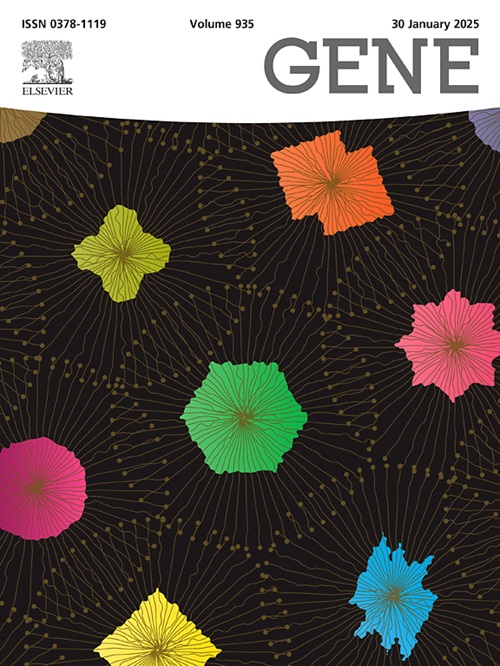Tanshinone T1/T2A inhibits non-small cell lung cancer through Lin28B-let-7-BORA/MYC regulatory network
IF 2.6
3区 生物学
Q2 GENETICS & HEREDITY
引用次数: 0
Abstract
Background
Lung cancer is the leading cause of cancer-related deaths worldwide. Tanshinones are a group of compounds in Salvia miltiorrhiza. Although the effects of tanshinone I (T1) and tanshinone IIA (T2A) are widely concerned, the mechanisms of T1 and T2A in lung cancer is rarely studied.
Experimental procedure
Xenograft tumor growth was performed to detect the role of T1/T2A in vivo. Next-generation sequencing of miRNA expression profiles in T1/T2A-treated A549 cells showed that T1/T2A upregulated the expression of the let-7 family. Then, let-7a-5p and its downstream target gene BORA were identified as the research objects in this paper. Mechanistically, we examined the interplay between miR-let-7 and BORA through the dual-luciferase reporter assay. Finally, the potential regulatory role of T1/T2A on Lin28B and MYC was explored.
Results
This study found that the let-7 family was significantly up-regulated via “Next-generation” sequencing (NGS) in the T1/T2A-treated A549 cell line, while BORA was downregulated. BORA was confirmed as a direct target of let-7. LncRNA MYCLo-5 was up-regulated after treatment with tanshinones. Knockdown of MYCLo-5 promoted the cell cycle and proliferation of non-small cell lung cancer (NSCLC) cells.
Conclusions
This study explored the effects of tanshinone T1 and T2A on NSCLC in vitro and in vivo, revealing the T1/T2A-let-7/BORA/MYCLo-5 regulatory pathway, which provided new insights for lung cancer treatment.
丹参酮 T1/T2A 有助于 let-7 抑制非小细胞肺癌。
背景:肺癌是全球癌症相关死亡的首要原因。丹参酮是丹参中的一组化合物。尽管丹参酮Ⅰ(T1)和丹参酮ⅡA(T2A)的作用受到广泛关注,但T1和T2A在肺癌中的作用机制却鲜有研究:实验过程:通过异种移植肿瘤生长来检测T1/T2A在体内的作用。T1/T2A处理的A549细胞中miRNA表达谱的新一代测序显示,T1/T2A上调了let-7家族的表达。随后,本文将let-7a-5p及其下游靶基因BORA确定为研究对象。从机理上讲,我们通过双荧光素酶报告实验研究了 miR-let-7 和 BORA 之间的相互作用。最后,我们还探讨了T1/T2A对Lin28B或MYC的潜在调控作用:结果:本研究通过 "下一代 "测序(NGS)发现,在 T1/T2A 处理过的 A549 细胞系中,let-7 家族明显上调,而 BORA 则下调。BORA 被证实是 let-7 的直接靶标。经丹参酮处理后,LncRNA MYCLo-5 上调。敲除MYCLo-5可促进非小细胞肺癌(NSCLC)的细胞周期和增殖:本研究探讨了丹参酮T1和T2A在体外和体内对NSCLC的影响,揭示了T1/T2A- let-7/ BORA /MYCLo-5调控通路,为肺癌治疗提供了新思路。
本文章由计算机程序翻译,如有差异,请以英文原文为准。
求助全文
约1分钟内获得全文
求助全文
来源期刊

Gene
生物-遗传学
CiteScore
6.10
自引率
2.90%
发文量
718
审稿时长
42 days
期刊介绍:
Gene publishes papers that focus on the regulation, expression, function and evolution of genes in all biological contexts, including all prokaryotic and eukaryotic organisms, as well as viruses.
 求助内容:
求助内容: 应助结果提醒方式:
应助结果提醒方式:


